“As long as I’ve been in the Coast Guard, the Smilax has
always been regarded as the Queen of the Fleet.”
CPO Jordan Bickford
Coast Guard Cutter Smilax, of the Cosmos-class ships, was commissioned in 1944 as the seventh of eight Inland Buoy Tenders. All but one of those cutters have been decommissioned. These ships perform Aid to Navigation (AtoN or ATON) work, inland construction, and Search and Rescue (SAR) if needed. Displacing 175 long tons, the Smilax is 100′ in length, with a crew of fourteen.
The Coast Guard Cutter Smilax floats in its home port at Sector Field Office Fort Macon, North Carolina. She was commissioned five months after Allied forces landed on the beaches of Normandy. Smilax the “Queen of the Fleet,” bears her esteemed title earned for being the oldest commissioned vessel in the Coast Guard’s active service. As the queen, Smilax’s bow identification numbers are painted gold, distinguishing it from other ships in the fleet. Most cutters have a service life of around fifty-five years, yet the current Queen of the Fleet shows no signs of slowing down after more than seventy-five. Here, during the Coast Guard’s 235th anniversary year, the branch is experiencing unprecedented enlistment numbers and the largest operating budget in recent memory.
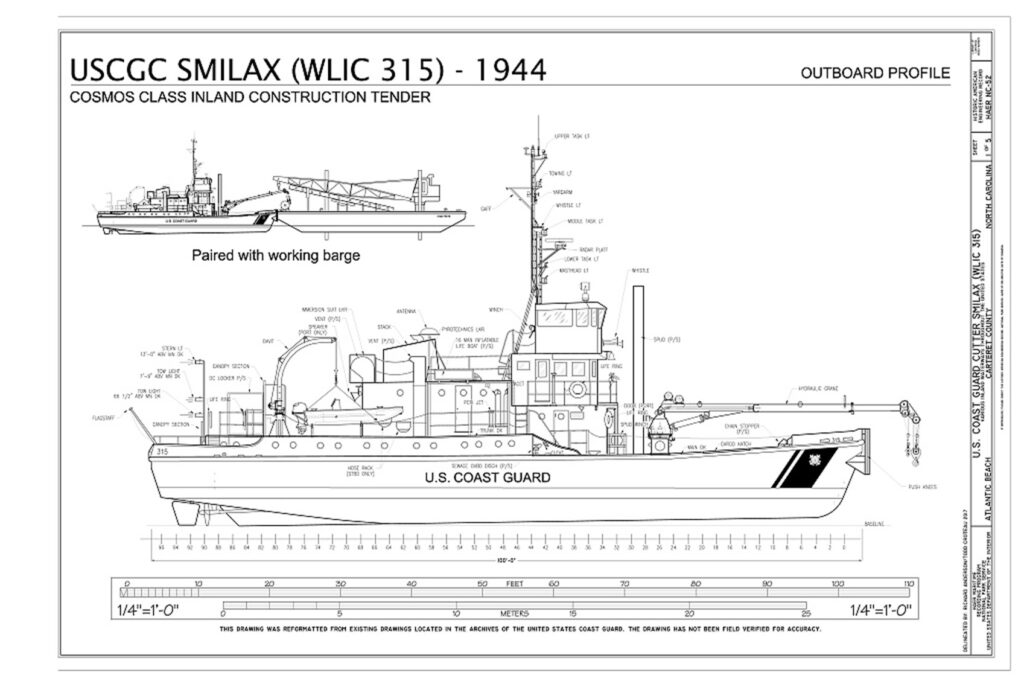
The Role of USCGC Smilax in the Coast Guard Fleet
A Coast Guard Cutter is a commissioned vessel that is at least sixty-five feet in length and has accommodations for a crew to live aboard. These ships, denoted with the prefix “USCGC,” are crucial for a wide range of Coast Guard missions, from maritime law enforcement and search and rescue to national defense.
The Coast Guard fleet includes various types of cutters, such as National Security Cutters, Fast Response Cutters, icebreakers, and buoy tenders, each with specialized capabilities. The term “cutter” dates back to the Revenue Cutter Service, a predecessor to the Coast Guard, and reflects the historical role of these vessels in patrolling coastlines and enforcing maritime laws. Modern cutters, such as the National Security Cutters, are designed with enhanced interoperability with the Navy, allowing them to perform wartime missions alongside naval vessels.
Cutters range in size and purpose, from tugs and buoy tenders to icebreakers and National Security Cutters. While not a strict rule, black-hulled cutters (such as Smilax) are often associated with maintenance of navigation aids, white-hulled cutters are typically used for search and rescue and law enforcement. In contrast, red-hulled cutters are icebreakers used in polar operations.
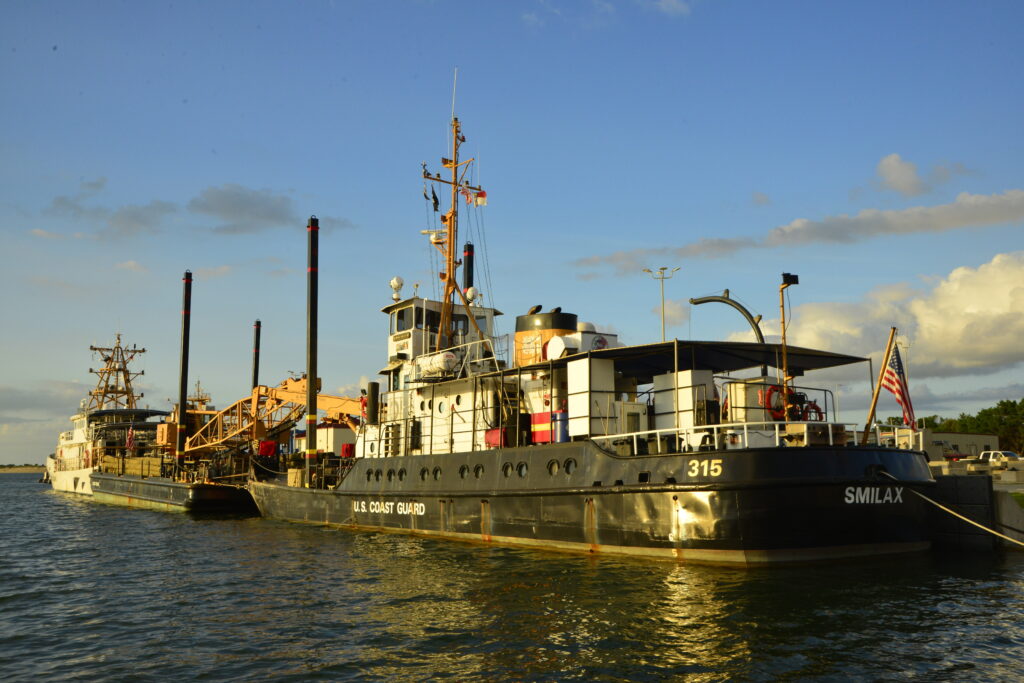
Historical Origins of the Cutter Class
The term “cutter” originated in the 18th century, referring to a fast sailing vessel with a specific rigging configuration used by the British Royal Customs Service and later adopted by the US Maritime Service. Nowadays, they’re generally smaller than Navy ships, with the largest class being just over 400 feet long (excluding the icebreaker, which is larger). Cutters typically undertake shorter patrols, around one hundred days. Cutters often “loiter” or patrol areas for extended periods, waiting for targets or rescue situations to arise.
Despite their distinct roles, there are overlaps in missions. The Coast Guard can be transferred to the Navy’s control during wartime. They also collaborate on disaster response and maritime security efforts. They possess arrest authority and can enforce maritime laws. The Navy does not have arrest authority. A small Coast Guard contingent is sometimes placed with Navy ships to handle maritime law enforcement due to the Posse Comitatus Act.
USCGC Smilax WLIC-315 and the Pirate Queen’s Legacy
Having served the Coast Guard for nearly eighty years, Smilax has stories to tell, including an encounter with another queen — and a more nefarious one at that. Off the coast of Beaufort, North Carolina, in 2013, the Smilax crew and archeologists recovered five cannons and several barrel hoops from the sunken frigate Queen Anne’s Revenge – the flagship of the infamous pirate Blackbeard.
The five cannons hauled out by Smilax weigh approximately one ton each and most likely fired six-pound cannonballs. Historical records indicate Queen Anne’s Revenge was run aground in that location in 1718. Blackbeard survived for several months afterward before he was killed in a battle with British troops.

Construction and Capabilities of USCGC Smilax WLIC-315
The Smilax was built in 1943 by Dubuque Boat & Boiler Works in Dubuque, Iowa. When most other ships were being built in forty days, the Smilax was built over the course of a year and cost approximately $194,238, making her the most expensive ship in its class at the time. This inland construction tender is powered by twin Waukesha diesel engines that provide 450 kW of power, enabling the vessel to reach 10.5 knots. She can push a seventy-foot barge with a crane that can lift 8.2 tons. The crane is used during search and rescue/search and recovery missions.
Service History of USCGC Smilax WLIC-315
After commissioning, she was assigned to the Seventh District and was stationed at Fort Pierce, Florida, where she engaged in the aid to navigation mission. From 1 Jun 1954 to 9 Nov 1965, she was homeported out of New Smyrna Beach, Florida. While stationed in Florida, she assisted on several search and rescue cases.
At twenty years of service, Smilax was refitted with new engines, and given a seventy-foot barge. On 9 November 1965, she moved to Brunswick, Georgia, as her new homeport, still carrying out the aids to navigation mission for that area. She was redesignated WLI-315 in 1966, and WLIC-315 on 1 Oct 1979.
In Jul 1999, she moved to her current homeport of Atlantic Beach, North Carolina, relieving her sister ship USCGC Primrose (WLIC-316) of her aids to navigation duty. Her mission, since recommissioning, has been ensuring the safe movement of mariners. From her current homeport she is responsible for maintaining 1,226 fixed aids to navigation such as lights and range markers. She is also responsible for twenty-six buoys throughout the Outer Banks of North Carolina.
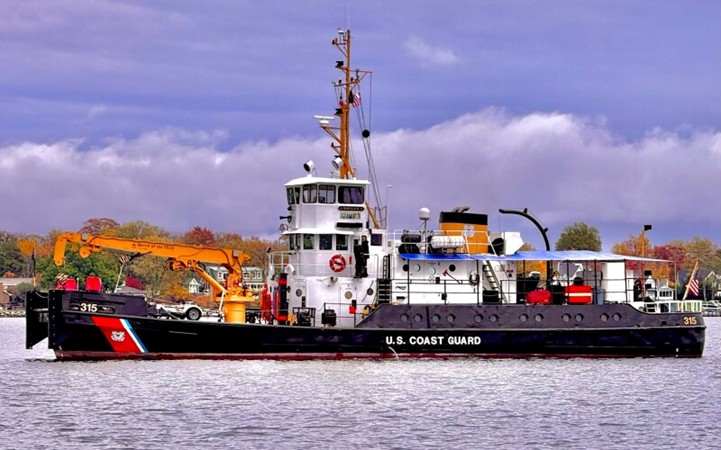
Smilax moved to a new homeport in Brunswick, Georgia on 9 Nov 1965, before being re-classified again. As a WLIC, or inland construction tender, the Smilax became responsible for constructing, repairing, and maintaining fixed ATON within inland waterways. It remained there until July 1999, when it moved to its current homeport.
“One ship, one crew, everything says Smilax, and they all work together,” said retired Chief Warrant Officer Scott McAloon, former (2010-2014) Commanding Officer of the Smilax. “Everybody’s dirty in a set of coveralls, and it’s just such a fun ship to be part of. These construction tenders, they’ll humble you. From ship driving to getting out on the deck and working, it’s a real special thing.”
Smilax plays a crucial role in maintaining navigation in Oregon Inlet, Hatteras Inlet, Ocracoke Inlet, and Beaufort Inlet. For her service in wartime and peace, the USCGC Smilax has been awarded a Presidential Unit Citation, Secretary of Transportation Outstanding Unit Award, Coast Guard Unit Commendation, American Campaign Medal, World War II Victory Medal, National Defense Service Medal (4), Global War on Terrorism Service Medal, Humanitarian Service Medal, Sea Service Deployment Medal, Coast Guard Meritorious Unit Commendation and Coast Guard Bicentennial Unit Commendation.
Comparing USCGC Smilax WLIC-315 and USS Blue Ridge
By comparison, the oldest active-duty ship in the Navy (besides the floating museum ship USS Constitution) is the 7th Fleet flagship USS Blue Ridge (LCC-19). Blue Ridge’s keel was laid on February 27, 1967, and she was commissioned on November 14, 1970.
Her rich history includes commanding Operations Eagle Pull and Frequent Wind during the Vietnam War, receiving the Humanitarian Service Medal in 1984 for rescuing Vietnamese refugees during Operation Boat People, performing a nine-and-a-half-month deployment as flagship for U.S. Naval Forces Central Command during the Persian Gulf War, and rushing supplies and relief to Japan during Operation Tomodachi.
Like Smilax, Blue Ridge is also still hard at work, having recently wrapped up her longest summer patrol in five years, a 77-day, 10,000-nautical-mile West Pac cruise with stops in Malaysia, Palau, the Philippines, Singapore, Thailand, and Vietnam. And she carries golden anchors, albeit to denote her regular retention awards.
Also, while not specifically about the Smilax, there are films which showcase the Coast Guard’s work and may offer insight into similar operations: “The Guardian” (2006): focuses on Coast Guard rescue swimmers; “The Finest Hours” (2016): recounts the true story of a daring Coast Guard rescue; “Coast Guard” (1939): a classic drama about the Coast Guard. Coast Guard TWS currently lists thirty-three members who have served aboard this cutter.

The Quiet Legacy of USCGC Smilax WLIC-315
In 2023, the ship went into drydock for five months to get squared away, cleaned up, and repainted.
Smilax is but one of a number of vessels of her type and duty who ply our waterways daily with a relatively small crew on an old vessel without fanfare or headlines, doing everything asked of her, sustaining maritime activity and safety. She fought in no battles, has no monuments or books or films in her honor, and gained no combat stars.
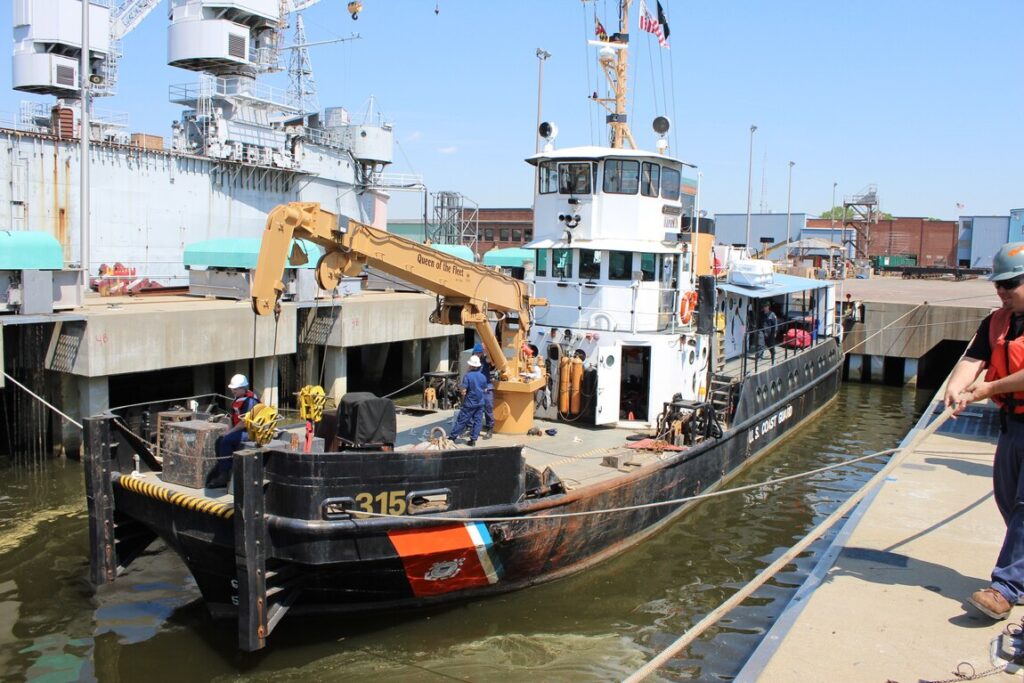
She rarely makes the news and simply goes about her laborious business keeping America safe and productive as the Coast Guard has done for two and a half centuries.
Her legacy of service above self is another testimony to incalculable numbers of quiet and almost silent military activities without which our nation could not survive as we do; giving full meaning to the words, “Semper Paratus.”
Read About Other Famous Military Units
If you enjoyed learning about USCGC Smilax WLIC-315 By A3C Michael Bell, we invite you to read about other Famous Units on our blog. You will also find military book reviews, veterans’ service reflections and more on the TogetherWeServed.com blog. If you are a veteran, find your military buddies, view historic boot camp photos, build a printable military service plaque, and more on TogetherWeServed.com today.
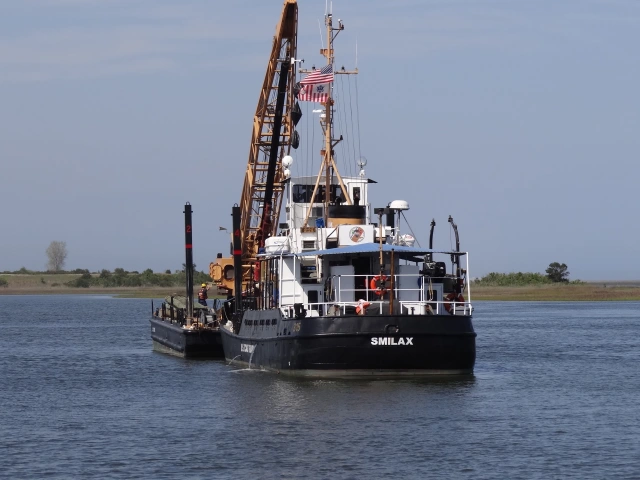
0 Comments